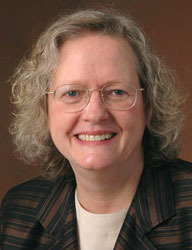From the Dean

As always, I am inspired by the ways our students and faculty are having an “an impact on the world.”
In this edition of Engineering Impact Online, we share the story of research that focuses on how human-machine interaction can help improve surgical outcomes. The goal of the team, led by Juan Pablo Wachs, associate professor of industrial engineering, is to provide visual systems that are so well integrated and feature such clear “augmented reality” guidance that the surgeon and the remote mentor can feel as if they are next to each other. The STAR (System for Telementoring with Augmented Reality) project has enormous possibilities for surgeons working in rural areas or in combat zones.
Building new, energy-efficient homes has become more common as a way to reduce greenhouse gases that contribute to global warming. However, what do you do with the more than 130 million existing houses, most of which have been in existence for decades? Eckhard Groll, Reilly Professor of Mechanical Engineering and director of Purdue’s Office of Professional Practice, is leading a team of graduate students who are also Whirlpool engineers. The students are living in a West Lafayette house built in the late 1920s for two semesters as part of the Whirlpool Engineering Rotational Leadership Development (WERLD) program. The goal is to convert the historic building to a super-efficient, net-zero energy home.
And when it comes to homes and communities, disasters — whether due to human or natural causes — can result in power outages that further contribute to a community’s recovery. With high-impact weather events on the rise, Roshanak Nateghi, assistant professor of industrial engineering with a dual appointment in environmental engineering, is using mathematical models to determine how to better predict the U.S. power grid’s reliability.
In the summer of 2015, Sangtae Kim, a distinguished professor of chemical engineering and now the Jay and Cynthia Ihlenfeld Head of Chemical Engineering, solved a 140-year enigma in fluid mechanics: Why does a simple formula describe the seemingly complex physics for the behavior of elliptical particles moving through fluid? He worked on a solution off and on for more than 35 years, coming up with what he calls a “short and simple proof.” In the process, he also solved a more general mathematical problem. These discoveries will allow the development of new computational tools to describe the behavior of nanoparticles in fluids — with applications in pharmaceutical discovery and other industrial uses.
Finally, as the College of Engineering continues to build on the opportunities created by our five-year expansion plan, we are pleased to share with you how excited we are about Ever True: The Campaign for Purdue University and the new opportunities that it will open up for Engineering and for Purdue.
Leah H. Jamieson
The John A. Edwardson Dean of Engineering